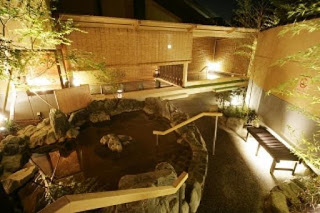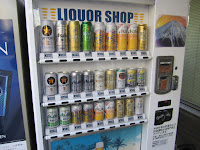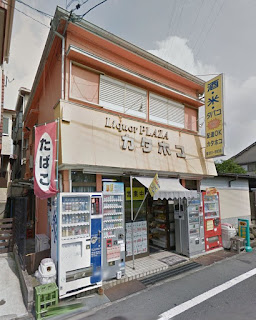Aside from the local train which is great for short distances, train fares can add up quickly and can be a very time-consuming method to navigate Japan. Before considering this option, you will have to evaluate your budget and time to see if this is the most appropriate method of travel to your destination. I highly recommend familiarizing yourself with the website http://www.hyperdia.com/en/ . This will be your best resource to help plan your trips by local train and bullet train.
 For those further distances when you're lacking time, and for all of you who have never had the chance to experience a Japanese bullet train (Shinkansen), I highly recommend this option. While fare can be a bit high, it may mean the difference between arriving the same day as opposed to +1 day or more. Sometimes it can acutally be even cheaper! And since you're already in Japan, this is the perfect chance to experience it! Everyone should ride it at least once. Professor Scott provides a great opportunity each year as he arranges a trip to Hiroshima for the students via bullet train at a discounted rate. This is definitely one trip you don't want to miss on.
For those further distances when you're lacking time, and for all of you who have never had the chance to experience a Japanese bullet train (Shinkansen), I highly recommend this option. While fare can be a bit high, it may mean the difference between arriving the same day as opposed to +1 day or more. Sometimes it can acutally be even cheaper! And since you're already in Japan, this is the perfect chance to experience it! Everyone should ride it at least once. Professor Scott provides a great opportunity each year as he arranges a trip to Hiroshima for the students via bullet train at a discounted rate. This is definitely one trip you don't want to miss on.There are however, other slower low cost options available such as the night bus, though not really recommended. Living up to it's name, it's literally a bus that you catch in the evening, and typically arrives at your destination the following morning. While the fare is great, (usually ¥2500-¥3500) however, you will arrive at your destination exhausted, as the bus makes many stops along the way making it really difficult to get some rest.
 At last, for those of you who want to travel a little further away from central Japan, there are a few low cost air carriers, namely, JetStar, Skymark, and Peach Aviation. These three airlines are great for booking really cheap flights within and outside of Japan, and often times it's actually cheaper than the local train or bullet trains. The only variable you need to account for is your fare to and from the airports. However, some flights to Tokyo, Okinawa or Hokkaido can range from only ¥1500-¥2500, you literally can't be it! Be aware though, plan to travel with strictly a carry-on bag as you will be subject to additional baggage fees. (Hint: If you are checking a bag, it's way cheaper to pay for your checked bag online before your departure than paying at the airport). Try to pack light as they are strict with weight and size restriction, the fare may be really cheap but this is where they make up for it. Your carry-on of course is free if it falls within their guidelines. It's a good idea to sign up and follow Peach Aviation as they often post new flight sales almost monthly to different locations.
At last, for those of you who want to travel a little further away from central Japan, there are a few low cost air carriers, namely, JetStar, Skymark, and Peach Aviation. These three airlines are great for booking really cheap flights within and outside of Japan, and often times it's actually cheaper than the local train or bullet trains. The only variable you need to account for is your fare to and from the airports. However, some flights to Tokyo, Okinawa or Hokkaido can range from only ¥1500-¥2500, you literally can't be it! Be aware though, plan to travel with strictly a carry-on bag as you will be subject to additional baggage fees. (Hint: If you are checking a bag, it's way cheaper to pay for your checked bag online before your departure than paying at the airport). Try to pack light as they are strict with weight and size restriction, the fare may be really cheap but this is where they make up for it. Your carry-on of course is free if it falls within their guidelines. It's a good idea to sign up and follow Peach Aviation as they often post new flight sales almost monthly to different locations.Finally, I wanted to bring up Airbnb for those of you unfamiliar with it. While staying in a hostel is great if it's only yourself or maybe with one other person, often times you can actually book a whole apartment in prime locations that sleep many more people. Booking an apartment together typically ends up actually costing less than hostel rates and provides a much comfier atmosphere. I've recently used it in Tokyo and Rome and have had nothing but great experiences. You can search for available places at www.airbnb.com
Best of luck with your travels, if you have any questions, comment below and I'll do my best to help you out!


















